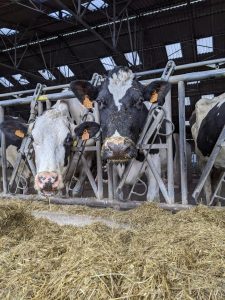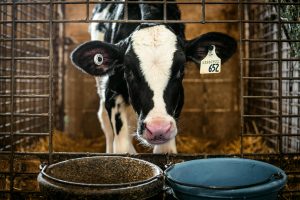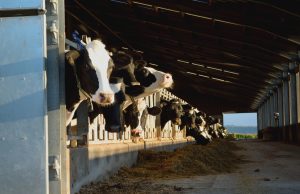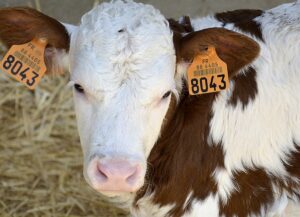Álvaro García
Too often, we overlook the fact that the rumen can supply a large portion of the cow’s amino acid needs—efficiently and at no extra cost—when microbial growth is properly supported. This microbial protein is not only highly digestible but also has an amino acid profile that often outperforms commercial bypass sources. Just as producers refer to opportunity milk—milk production lost due to management or nutritional shortfalls—we can also think in terms of opportunity protein: the microbial protein that goes unrealized when the rumen isn’t adequately fed. Before investing in costly protein sources like heat-treated soybean meal or synthetic protected amino acids, it’s worth asking: have we done everything we can to maximize microbial protein synthesis?
A key contributor to amino acid supply
Microbial protein is synthesized in the rumen as bacteria, protozoa, and fungi grow by fermenting dietary carbohydrates and utilizing nitrogen from rumen degradable protein (RDP) sources—such as ammonia, peptides, and amino acids. These microbes multiply rapidly and flow out of the rumen with digesta, where they are digested in the small intestine and contribute significantly to the cow’s supply of metabolizable protein (MP).
Under well-balanced dietary conditions, microbial protein typically accounts for 50% to 60% of total MP, and in some cases—particularly in moderate- to high-forage diets with synchronized energy and nitrogen—it can exceed that range (NASEM, 2021). This makes it one of the most consistently available and cost-effective protein sources for the lactating cow.
The amino acid profile of microbial protein is well matched to the needs of the dairy cow. It is particularly rich in lysine and methionine, the two most limiting amino acids for milk protein synthesis and delivers a more balanced amino acid pattern than many plant-based RUP sources. According to NASEM (2021), microbial protein has greater intestinal digestibility and higher biological value than most feed proteins, making it an ideal base upon which to build protein nutrition.
In fact, microbial protein is often used as the reference standard when evaluating the quality of supplemental RUP sources. Compared to soybean meal, canola meal, and even animal-based proteins, microbial protein delivers:
- Higher lysine content per unit of MP
- Consistent digestibility across feeding systems
- Improved nitrogen utilization, since it’s generated in synchrony with energy availability
Because of its efficiency and consistency, maximizing microbial protein synthesis not only improves amino acid delivery to the cow but also enhances nitrogen efficiency, reducing both feed costs and environmental nitrogen excretion (Huhtanen et al., 2008; Bach et al., 2005). To fully realize this potential, diets must be formulated to actively support microbial growth in the rumen. This involves providing fermentable carbohydrates that release energy at rates compatible with nitrogen availability, ensuring that RDP is supplied in amounts that align with the energy available for microbial use, and supplying key micronutrients such as sulfur and cobalt, which are essential for microbial metabolism and vitamin B₁₂ synthesis. When these elements are in balance, microbial protein becomes not just a byproduct of fermentation, but a high-value, precisely managed component of the cow’s metabolizable protein supply—one that improves both performance and sustainability.
Every time you feed fermentable carbohydrates and RDP, you’re feeding the microbial population. That means microbial protein is already part of your feed cost. In contrast, bypass protein supplements like heat-treated soybean meal or fish meal are add-on expenses—often two to three times more expensive per unit of metabolizable protein delivered to the small intestine. If microbial protein is limited due to poor rumen nutrition or imbalance, those bypass proteins are being used inefficiently. You may be paying for high-end protein that’s compensating for what the cow should already be producing herself.
How to know you’ve maximized microbial protein
Maximizing microbial protein begins with ensuring that the basic nutritional components for microbial growth are present and in balance. This means supplying enough RDP, which provides nitrogen in the form of ammonia, peptides, and amino acids; pairing it with fermentable carbohydrates like starch, sugars, and digestible fiber that fuel microbial multiplication; and supporting microbial metabolism with essential minerals such as sulfur and cobalt, which are required for enzyme activity and vitamin B₁₂ synthesis. According to NASEM (2021), microbial protein synthesis depends on the synchrony between energy and nitrogen availability—if one is lacking, the system underperforms.
You can evaluate how well the rumen is supporting microbial growth by monitoring certain nutritional and production indicators. Mid-range milk urea nitrogen (MUN) levels, typically between 10 and 14 mg/dL, suggest a well-balanced supply of RDP and fermentable energy. Low fecal starch content points to efficient energy capture in the rumen, while low non-esterified fatty acids (NEFA) and stable blood urea nitrogen (BUN) values reflect an appropriate energy-protein relationship. Stable milk protein yields—especially when moderate levels of bypass protein are fed—also indicate sufficient microbial protein synthesis.
On the other hand, several red flags may suggest microbial growth is being limited. A MUN below 8 mg/dL often reflects insufficient RDP supply. When milk protein remains low despite high RUP inclusion, it can signal an underfed microbial population. High fecal starch levels or poor fiber digestibility may also point to inadequate fermentable energy in the rumen, reducing microbial growth and protein output.
The table below compares microbial protein with heat-treated soybean meal, one of the most widely used RUP sources. While heat-treated soybean meal offers consistent RUP, it lacks the metabolic efficiency of microbial protein, especially when the latter is already maximized.
Characteristic |
Microbial Protein |
Heat-Treated Soybean Meal |
|
Digestibility |
80–90% |
65–75% (varies with processing) |
|
Lysine content (as % of MP) |
High |
Moderate |
|
Cost per kg of MP |
Already paid for via feed |
$$$ |
|
Amino acid balance |
Excellent |
Good to fair |
Relying entirely on microbial protein won’t always meet the needs of peak-lactation cows producing over 45 kg (100 lbs.) of milk per day. In these cases, well-chosen RUP sources are necessary to complement ruminal synthesis. However, bypass protein should be strategically added to a diet that already supports full microbial growth. If microbial protein production is suboptimal, then expensive supplements are compensating for inefficiencies—delivering less return on investment.
Before you invest in bypass protein, make sure your cow’s own protein-synthesizing ability is running at full capacity. Supporting microbial growth through balanced RDP and fermentable energy, alongside key micronutrients, delivers a highly efficient, biologically valuable source of protein.
Using tools like MUN, fecal starch analysis, and milk protein trends can help fine-tune this balance. Once this foundation is in place, then—and only then—should bypass protein sources be considered as strategic additions, not as replacements for what the rumen can already do best.
© 2025 Dellait Knowledge Center. All Rights Reserved.









